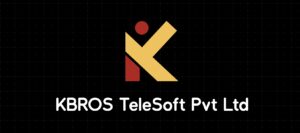At the Where 2.0 Conference next week, geographic visualization company FortiusOne plans to announce the opening of GeoCommons, a social mapping site and public data repository.
Originally scheduled for launch in February, GeoCommons took longer than expected. “We got more ambitious with the platform,” said company founder and CEO Sean Gorman.
GeoCommons now includes 2 billion location attributes, 25 million locations, 35,000 variables that describe a set of locations, and 1500 unique datasets of information. And it is sure to grow as users upload and share additional data sets. “We needed to re-architect the back end of the database to be able to handle that much data,” said Gorman.
The goal of the project, Gorman explained, is to enable people to tell stories with maps.
Storytelling in this case means making a map mashup, which involves presenting one or more geographically relevant data sets on an online map. GeoCommons mashups use a technique called heat mapping to translate data into color on a Google Map. Visualized thus, data becomes arguably more accessible and meaningful than it would be in a spreadsheet or represented with a Google Maps-style push pin.
The social aspect of the GeoCommons may end up adding as least as much value to the data as FortiusOne’s heat map technology. Map mashups have become significant tools in online civic discourse and GeoCommons, by virtual of its ease of use, will undoubtedly lead to more “citizen cartography,” as Gorman put it.
GeoCommons users have made maps that show the distribution of Africanized honeybees throughout the U.S., the distribution of deaths caused by tornadoes in the U.S., the distribution of methamphetamine labs busted by the D.E.A., and the distribution of crimes at 2,337 U.S. universities and colleges, to name a few.
The bulk of the data stored at GeoCommons comes from the government, non-profit organizations, universities, and national laboratories. It includes census, agricultural, crime, weather, disease, transportation, and other statistics. GeoCommons users can upload and share their own data, provided it’s in the KML or Shapefile format.
For Gorman, map making is a story with a happy ending. His company recently closed its first round of funding with In-Q-Tel, the CIA’s venture capital arm, and Chart Ventures.
The U.S. government’s endorsement of Gorman’s work represents something of a reversal. Shortly after 9/11, Gorman’s Ph.D. dissertation — a map of the U.S. fiber optic network — had the likes of former White House cyber terrorism czar Richard Clarke calling for Gorman’s work to be burned.
It may be worth noting that two other In-Q-Tel funded companies with related technology, Keyhole and @Last, ended up being acquired by Google.
